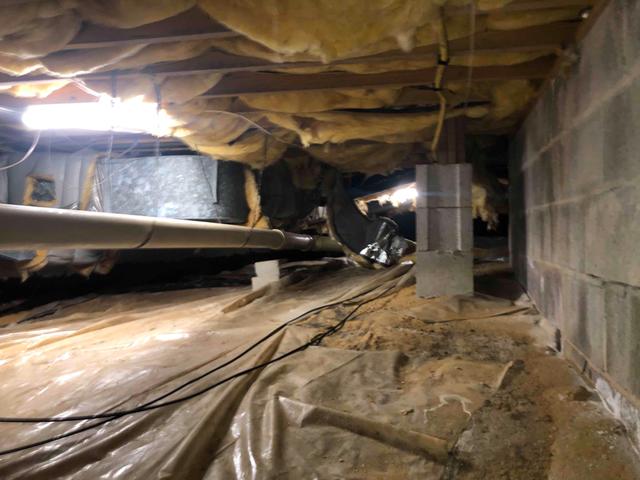
6-mil Vapor Barriers
The existing vapor barrier is a 6-mil, it is what is required at construction. When installed it's laid out on the ground and in some cases, U-shaped stakes are used to hold it in place. The purpose of the vapor barrier is to protect the crawl space from moisture in the ground. Without the liner being sealed, and with all the gaps and holes in the system, the liner isn't offering any protection from the earth's moisture and is contributing to rising humidity and increased moisture in the space.
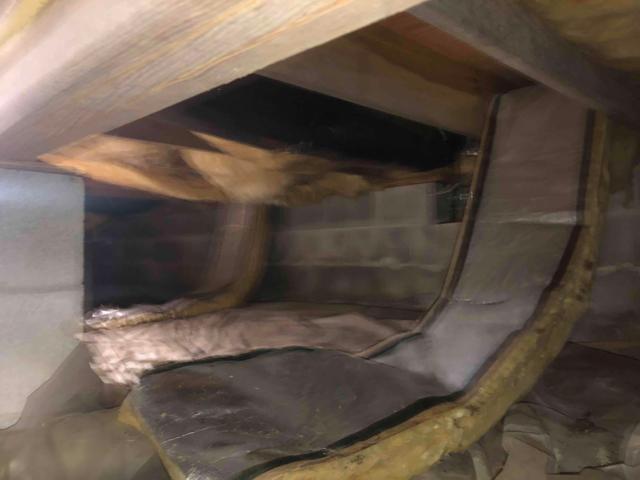
The Impact of Moisture
Fiberglass insulation absorbs the excess moisture like a sponge. Often when you see batts fallen from the floor joists like this, it's a result of their absorbing the excess moisture in the space and becoming too heavy to stay between the floor joists, leaving you with no insulation in your floors.
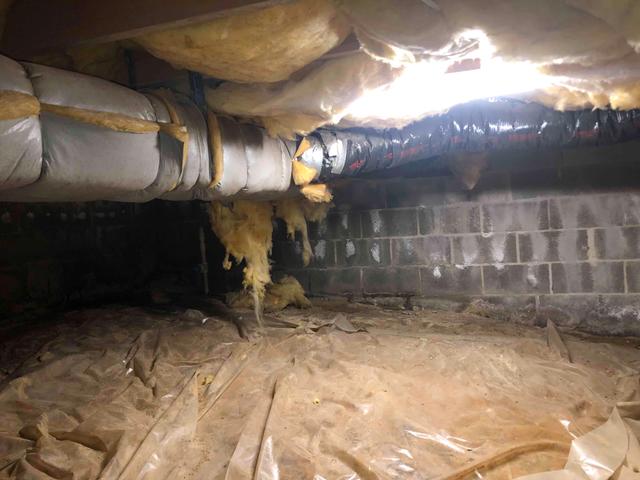
Foundation Walls
The block foundation walls are porous allowing moisture from outside to seep through. The white substance you see on the block wall is efflorescence, it is a result of minerals being pulled to the surface of the block as water works its way from the wet ground outside of the crawl space, through the block, and under the home.
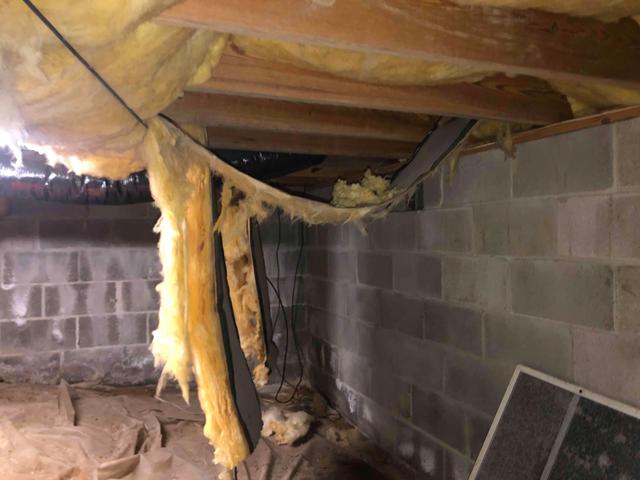
Foundation Vents
Foundation vents were intended to be open in the summer to offer enough airflow to keep the crawl space cool and dry. But this never worked, instead, hot humid air gets trapped under the home raising the relative humidity and creating a warm, humid, environment where mold, mildew, pests, and critters love to make their home.
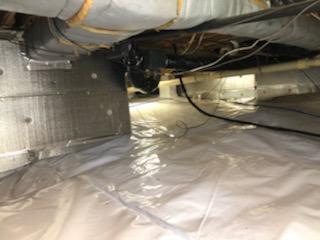
CleanSpace - A Heavy Duty Vapor Barrier
Replacing the vapor barrier with this 20-mil CleanSpace Vapor barrier is going to protect the crawl space from the earth's moisture. CleanSpace is a heavy-duty liner durable enough to withstand service persons crawling and working in this crawl space, and it's overlapped and sealed at all seams, wrapped and sealed around all piers, and attached to the foundation walls about 6 inches above outside grade to seal the crawl space from the ground's moisture.

Foam Board Insulation
The fiberglass insulation has been replaced with Foam Board Insulation. These panels of insulation are mechanically attached to the foundation walls and sealed at all seams to create an air barrier. A viewing strip is left at the top of the foundation wall, per building code, to allow for termite companies to do their inspections. Insulation from the foundation walls extends the thermal envelope of the home down to the crawl space floor, and our homeowner doesn't have to worry about the insulation falling from the floor joists again.
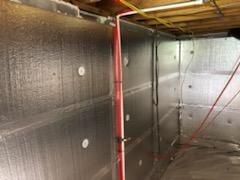
Air Sealing the Crawl Space
Blocking foundation vents, sealing the sill plate, rim band, and any penetrations through the foundation wall to the outside are key parts of controlling the environment in the crawl space. We want to keep as much outside air carrying moisture out as possible so that the dehumidifier can run as efficiently as possible to control the relative humidity of the space.


